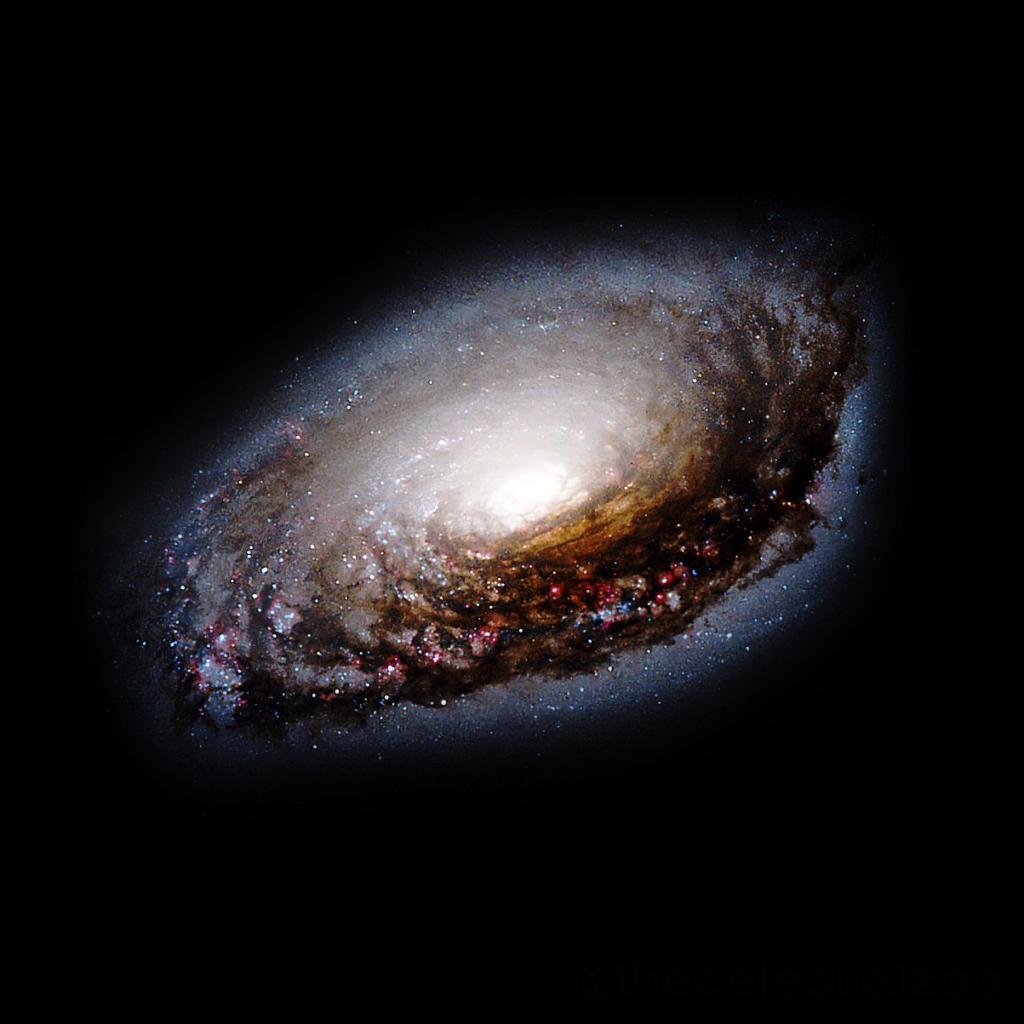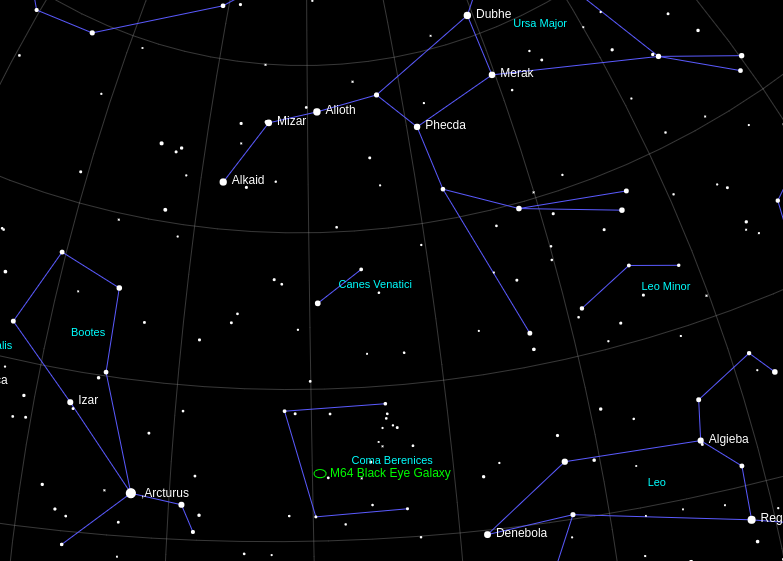The Black Eye Galaxy – M64 in the Messier Catalogue, or NGC 4826 – is a spiral galaxy in the constellation of Coma Berenices, with a dark dust cloud obscuring one side of the galaxy’s disc.

The Black Eye Galaxy is 5.30 million parsecs (17.3 million light-years) from Earth, contains approximately 100 billion stars and has a diameter of around 17,000 parsecs (54,000 light-years). (See Astronomical Distance Measurements)
The galaxy is actually composed of two counter-rotating disks of similar mass. The stars rotate clockwise in the same direction as the gas in galaxy’s central region, while the gas in the outer regions rotates anticlockwise. This structure may have formed from a merger with a gas-rich satellite galaxy in a retrograde orbit, or accretion of gas clouds from the intergalactic medium.
Location
The Black Eye Galaxy is located in the constellation of Coma Berenices, a faint constellation sandwiched between the brighter constellations of Boötes and Leo, with Ursa Major towards the north celestial pole and Virgo to the south.
A cascade of stars, identified in mythology as the hair of Queen Berenice II of Egypt, who gave her long hair as an offering to the gods, gives the constellation of Coma Berenices its Latin name, meaning Berenice’s Hair. This can be used to find the rough location of M64, which is a few degrees towards the bright red-giant star Arcturus.
The bright nucleus of the Black Eye Galaxy can be clearly seen with a small telescope.
The equatorial coordinates of the Black Eye Galaxy are:
Right Ascension: 12h 56m 43.7s, Declination: +21° 40′ 58″
To find the current position of the Black Eye Galaxy in the sky from your location, visit our Night Sky Simulator.
